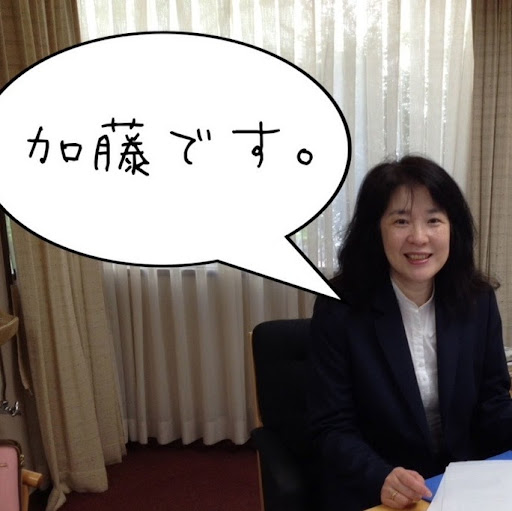Eiko D Kato
age ~55
from Richmond, CA
- Also known as:
-
- Eiko Living Kato
- Eiko Te Kato
- Eiko E Kato
- Elko Kato
- Phone and address:
- 441 36Th St, Richmond, CA 94805
Eiko Kato Phones & Addresses
- 441 36Th St, Richmond, CA 94805
- Poway, CA
- 7275 Charmant Dr, San Diego, CA 92122
- 7515 Charmant Dr, San Diego, CA 92122
- 10075 Barnes Canyon Rd, San Diego, CA 92121
- Coronado, CA
- San Francisco, CA
- Corona, CA
- North Hollywood, CA
- 937 Teresita Blvd, San Francisco, CA 94127 • 4155841624
Us Patents
-
Managing Users In A Multi-User Network Game Environment
view source -
US Patent:7711847, May 4, 2010
-
Filed:Feb 4, 2003
-
Appl. No.:10/359359
-
Inventors:Shekhar V. Dhupelia - San Diego CA, US
Glen Van Datta - San Diego CA, US
Brian Fernandes - San Diego CA, US
Eiko Erika Kato - San Diego CA, US
William McCarroll - San Diego CA, US -
Assignee:Sony Computer Entertainment America Inc. - Foster City CA
-
International Classification:G06F 15/16
-
US Classification:709239, 709205, 709229, 709219, 709202, 709227, 709228, 709200, 705 26, 705 31, 705 42, 705 6, 463 9, 463 30, 710 1, 710 10, 710 16, 710 33
-
Abstract:A multi-user online application network computing configuration maintains application level information at a portal or lobby server, rather than at each individual application server or host machine. Users can therefore learn about and select a desired application, such as an online game, through communication with the lobby server. After appropriate authorization processing, users can contact the associated application server, such as a game host, to begin their participation. The lobby server can therefore reduce the bandwidth requirements and other operating demands on the application server. In addition, cross-application communications in real-time are facilitated through the lobby server concept. The multi-user application environment also provides a common data model for maintaining user information, such as for establishing a ladder ranking system in the online gaming context in which user achievements are recorded and shared among users and among the different game applications.
-
Creating An Interactive Gaming Environment
view source -
US Patent:7822809, Oct 26, 2010
-
Filed:Jul 15, 2008
-
Appl. No.:12/218581
-
Inventors:Shekhar V. Dhupelia - San Diego CA, US
Glen Van Datta - San Diego CA, US
Brian Fernandes - San Diego CA, US
Eiko Erika Kato - San Diego CA, US
William McCarroll - San Diego CA, US -
Assignee:Sony Computer Entertainment America LLC - Foster City CA
-
International Classification:G06F 15/16
-
US Classification:709203, 709224, 709204, 709229, 713182, 713192, 463 42, 463 24, 463 40, 463 41, 463 43
-
Abstract:Methods for creating an interactive gaming environment are provided. In various embodiments, methods of the present invention may include initializing an interactive game application at a game server which is then characterized as having an active status, notifying a lobby server concerning the active status of the game server, registering the application with a universe management server via the lobby server, and allowing users to join the interactive gaming environment. The users joining the interactive gaming environment may be identified by a server key obtained from the game server.
-
Balancing Distribution Of Participants In A Gaming Environment
view source -
US Patent:7877509, Jan 25, 2011
-
Filed:Jul 15, 2008
-
Appl. No.:12/218579
-
Inventors:Shekhar V. Dhupelia - Foster City CA, US
Glen Van Datta - Foster City CA, US
Brian Fernandes - Foster City CA, US
Eiko Erika Kato - Foster City CA, US
William McCarroll - Foster City CA, US -
Assignee:Sony Computer Entertainment America LLC - Foster City CA
-
International Classification:G06F 15/173
-
US Classification:709239, 709223, 709203, 709205, 709229, 709202, 709219, 709227, 709200, 709232, 705 42, 705 31, 463 4, 463 30, 463 9, 463 42
-
Abstract:Systems for balancing distribution of participants in a gaming environment are provided. In various embodiments, systems of the present invention may include multiple application servers each hosting a common game application, a lobby server for assigning new client devices to one of the application servers, and a universe manager for receiving reports from each of the application servers concerning the status of the game application. The universe manager may further instruct the lobby server to reallocate assignment of subsequent new client devices in order to balance the number of client devices assigned to each application servers.
-
Method For Authenticating A User In An Interactive Gaming Environment
view source -
US Patent:7930345, Apr 19, 2011
-
Filed:Jul 19, 2010
-
Appl. No.:12/839306
-
Inventors:Shekhar V. Dhupelia - San Diego CA, US
Glen Van Datta - San Diego CA, US
Brian Fernandes - San Diego CA, US
Eiko Erika Kato - San Diego CA, US
William McCarroll - San Diego CA, US -
Assignee:Sony Computer Entertainment America LLC - Foster City CA
-
International Classification:G06F 15/16
-
US Classification:709203, 709229, 709205, 709224, 713192, 713182, 463 42, 463 24, 463 40, 463 41, 463 43
-
Abstract:Methods for creating an interactive gaming environment are provided. In various embodiments, methods of the present invention may include initializing an interactive game application at a game server which is then characterized as having an active status, notifying a lobby server concerning the active status of the game server, registering the application with a universe management server via the lobby server, and allowing users to join the interactive gaming environment. The users joining the interactive gaming environment may be identified by a server key obtained from the game server.
-
Method For Ladder Ranking In A Game
view source -
US Patent:7962549, Jun 14, 2011
-
Filed:Jul 19, 2010
-
Appl. No.:12/839311
-
Inventors:Shekhar V. Dhupelia - San Diego CA, US
Glen Van Datta - San Diego CA, US
Brian Fernandes - San Diego CA, US
Eiko Erika Kato - San Diego CA, US
William McCarroll - San Diego CA, US -
Assignee:Sony Computer Entertainment America LLC - Foster City CA
-
International Classification:G06F 15/16
-
US Classification:709203, 709224, 709204, 709229, 709239, 713182, 713192, 463 43, 463 24, 463 40, 463 41
-
Abstract:Methods for creating an interactive gaming environment are provided. In various embodiments, methods of the present invention may include initializing an interactive game application at a game server which is then characterized as having an active status, notifying a lobby server concerning the active status of the game server, registering the application with a universe management server via the lobby server, and allowing users to join the interactive gaming environment. The users joining the interactive gaming environment may be identified by a server key obtained from the game server.
-
Environment Information Server
view source -
US Patent:8032619, Oct 4, 2011
-
Filed:Dec 3, 2003
-
Appl. No.:10/729573
-
Inventors:Eiko E. Kato - Foster City CA, US
Seth C. H. Luisi - Foster City CA, US
Glen Van Datta - Foster City CA, US -
Assignee:Sony Computer Entertainment America LLC - Foster City CA
-
International Classification:G06F 15/173
G06F 15/16 -
US Classification:709223, 709203, 709219
-
Abstract:Methods and apparatus implementing techniques for providing network environment information. In one implementation, a environment information server includes: a server controller; a network connection connected to said server controller; an environment information database connected to said server controller for storing data for one or more network environments; and a request handler connected to said server controller for processing requests received through said network connection; wherein said request handler exchanges data with said environment information database in the course of processing a received request.
-
Communication Across Multiple Game Applications
view source -
US Patent:20090006604, Jan 1, 2009
-
Filed:Jul 15, 2008
-
Appl. No.:12/218591
-
Inventors:Shekhar V. Dhupelia - San Diego CA, US
Glen Van Datta - San Diego CA, US
Brian Fernandes - San Diego CA, US
Eiko Erika Kato - San Diego CA, US
William McCarroll - San Diego CA, US -
International Classification:G06F 15/173
-
US Classification:709223
-
Abstract:Systems for communication across multiple game applications are provided. In various embodiments, systems of the present invention may include a first application server hosting a first game application, a second application server hosting a second game application that is different from the first game application, a first client device for interaction with the first game application, a second client device for interaction with the second game application, and a universe management server for maintaining information about the first client device and the second client device. The information maintained in the universe management server may include game application interaction information, which allows the universe management server to facilitate real-time communication between a user of the first client device and a user of the second client device. The universe management system may further receive communications from both client devices via the first and second application server.
Googleplus

Eiko Kato

Eiko Kato

Eiko Kato

Eiko Kato
Relationship:
Married

Eiko Kato
view source
Eiko Kato
view sourceFriends:
Shuichiro Kawaguchi, Kenichi Anzai, Shinji Motoori, Kohei Suzuki

Eiko Kato
view sourceFriends:
Yumiko Shindo, Daiki Nozawa, Takaya Kato, Yuta Hamaya, Yuka Hayashi

Soek Name Eiko Kato
view sourceYoutube
Get Report for Eiko D Kato from Richmond, CA, age ~55





